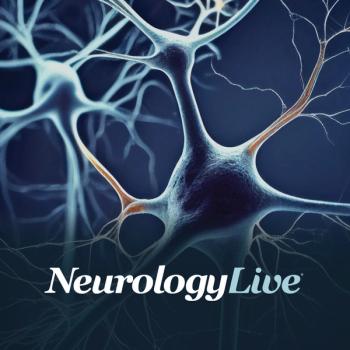
How Once-Nightly Sodium Oxybate Changes the Treatment Landscape for Narcolepsy
John Harsh, PhD, clinical research director, Colorado Sleep Institute, sat down at SLEEP 2023 to discuss the RESTORE study results, and why patients with narcolepsy appear to prefer once-nightly sodium oxybate.
Earlier this year, the FDA approved Avadel Pharmaceuticals’ oral, extended-release formulation of sodium oxybate for the treatment of cataplexy or excessive daytime sleepiness in adults with narcolepsy. The decision marked the first FDA-approved once-nightly oxybate for patients with the condition, further expanding the treatment toolbox for clinicians. Prior to approval, patients typically used twice-nightly sodium oxybate, or Xyrem (Jazz Pharmaceuticals); however, new data suggests that patients prefer the once-nightly formulation.
Presented at the
Led by John Harsh, MD, PhD, after 3 months of treatment, results showed that patients heavily favored once-nightly, as it was preferred by 93.6 (73 of 78) of the cohort. For those on twice-nightly, 70.8% reported that the second dose was inconvenient, and more than 90% (90.8%) arose from their bed after waking to take their second dose. Harsh, clinical research director at Colorado Sleep Institute, sat down at the meeting to discuss the findings, and their clinical significance for both patients and clinicians alike. Additionally, he talked about treatment optimization for patients with narcolepsy, and when it might be applicable to maintain twice-nightly treatment.
NeurologyLive®: Can you provide an overview of how RESTORE was conducted?
John Harsh, MD, PhD: This follows the REST-ON trial, which is a phase 3 trial assessing safety and efficacy of once-nightly sodium oxybate. That trial met all three of its end points, as patients were more alert during the daytime following treatment. They were judged by the investigators to be improved overall, and had fewer cataplexy events, something that's significant with narcolepsy. The RESTORE study is an open label, switch study, to look at long term issues associated with once-nightly oxybate, to give a real-world opportunity to assess titration, and to get some idea of just how successful this is with all patients in that trial. There were there were three groups in the trial: the patients who had completed REST-ON study, patients who had been on twice-nightly oxybate before they started the trial and switched during the trial to once=nightly, and group of oxybate-naive patients.
Among the results, what stood out to you?
I'm sort of surprised by it for the Switch participants, those who had exposure twice-nightly and then once-nightly. I was surprised by the number who actually preferred the once-nightly. For about 100 participants, 94% preferred the once-nightly. I mean, I expected a preference based upon context, but 94%, that's just about everybody. I was also a bit surprised by the effects that attributed to the second nightly dose of the patients they were taking twice nightly. The concern was that sometimes patients don't take their second nightly dose, sometimes that's intentional, sometimes that's unintentional, but it's meaningful as a consequence. By this data, the patients were more likely to feel groggy the next day, they feel worse symptomatically the next day, they're tired the next day. That's important to us. Also, most of the patients reported it was more convenient to take the once-nightly dose. not surprisingly.
Are there certain patients who are best suited for one option or the other? Despite what the results show.
That's a that's a perfect question when I've been stewing over for that for a while. If a patient has been on a stable dose of twice-nightly, and they're doing well, I can understand their reluctance to switch. If you're doing good, don't change things. If you're a physician, are you going to switch a patient from twice-nightly if they are doing well? If they're more familiar with a twice-nightly, then they're likely to continue to do that. Who wouldn't want to switch? I think there are a small group, maybe people whose schedules on free days and workdays are totally different. They might like that multiple dosing opportunity. People with irregular sleep [might not want to switch]. They might like that multiple dosing opportunity. But by and large, I think most patients would benefit with prefer and would benefit from the ones nightly dosing, compliance is better, big issue.
Besides the administration dosages, are there any advantages to once-daily oxybate?
We have good reason to believe the effectiveness is about the same, and the adverse event profile was about the same. In terms of clinical outcomes, as long as you have compliant patients it's about the same, that's my impression.
What other types of post-marketing research would you like to see collected on this therapy?
In terms of other populations, I would want to look at other hypersomnolence populations, that's clear. Primary hypersomnolence or hypersomnia, secondary to neurodegenerative disorders, depression, maybe. There's a lot of sleepy people out there who need help. I'm a little reluctant, but I think it might be notable that there are a lot of sleepy kids also, so the use of the pediatric population is certainly a consideration, and something that needs a lot of attention.
Transcript was edited for clarity.
REFERENCE
1. Roy A, Harsh J, Ajayi A, Stern T, Dubow J, Gudeman J. Patient preferences and nocturnal experiences with oxybate therapy for narcolepsy: RESTORE study interim analysis. Presented at: 2023 SLEEP Annual Meeting; June 3-7; Indianapolis, Indiana. 0581.
Newsletter
Keep your finger on the pulse of neurology—subscribe to NeurologyLive for expert interviews, new data, and breakthrough treatment updates.



































